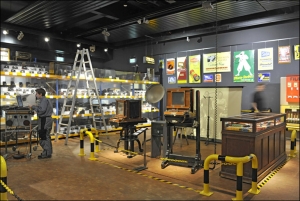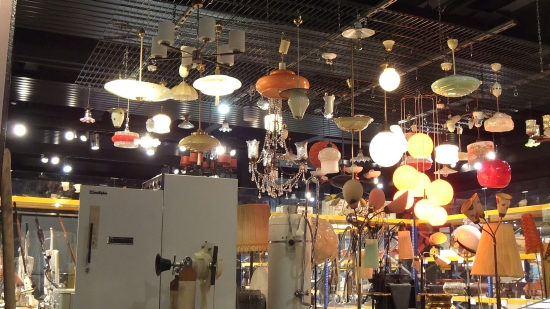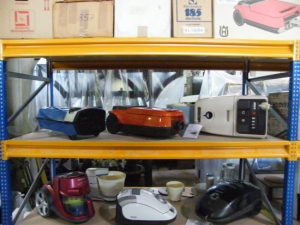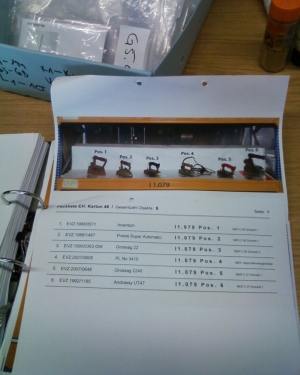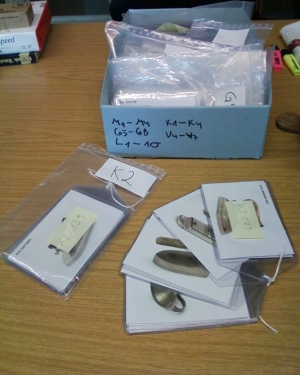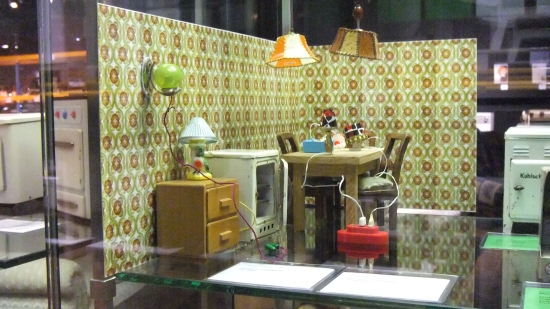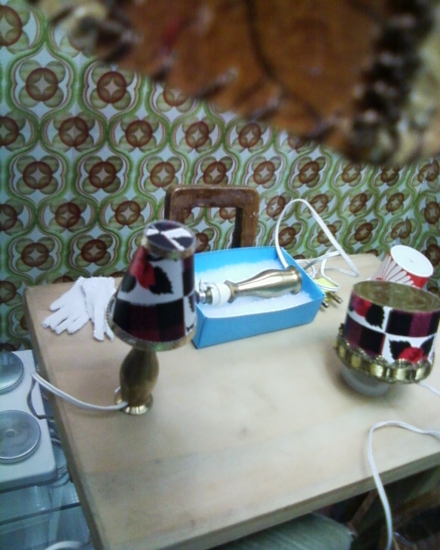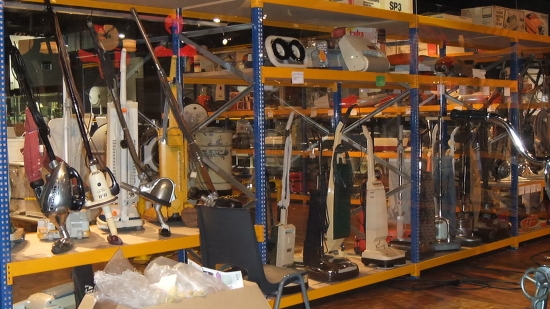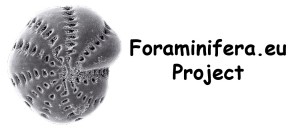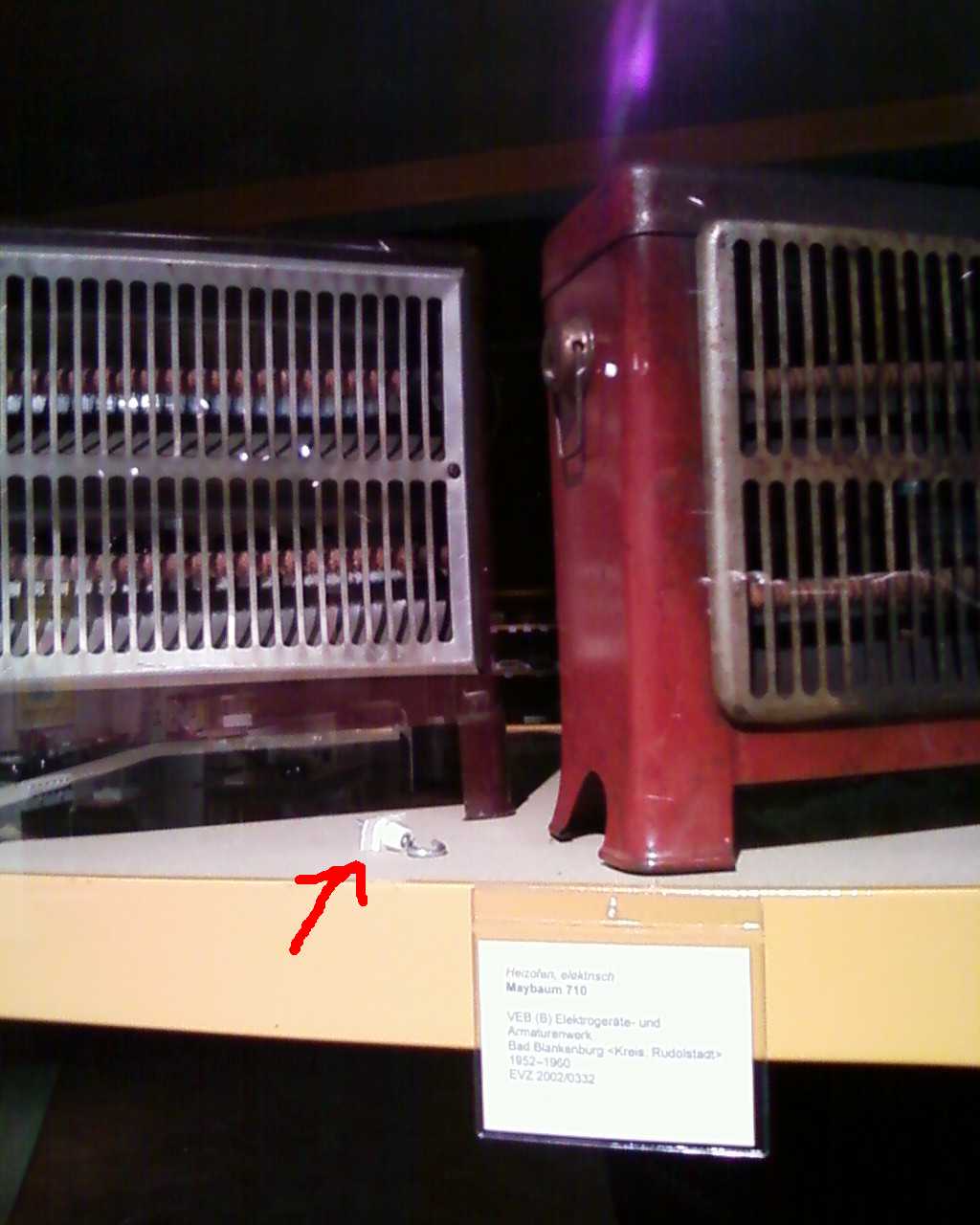 Every occupation has its codes, acronyms and abbreviations. As a radio ham I say things like “I’m QRV at 1900 UTC for a QSO on 40 meters, 73!” without even thinking about how odd this must sound to an outsider. While those codes are international and standardized to reduce language barriers, in our registrar’s realm that’s a different story. My English is quite okay but I often stumble on acronyms and abbreviations that are common in the U.S. museum field but I don’t understand. To make international collaboration easier, I started putting together a collection of these with the help of the fine people that contribute to the RC-AAM listserv. Some of the terms are common in the whole USA, others are used regional or only in certain museums. The list occasionally will be updated when I stumble upon another code I am not familiar with or someone contributes a new term.
Every occupation has its codes, acronyms and abbreviations. As a radio ham I say things like “I’m QRV at 1900 UTC for a QSO on 40 meters, 73!” without even thinking about how odd this must sound to an outsider. While those codes are international and standardized to reduce language barriers, in our registrar’s realm that’s a different story. My English is quite okay but I often stumble on acronyms and abbreviations that are common in the U.S. museum field but I don’t understand. To make international collaboration easier, I started putting together a collection of these with the help of the fine people that contribute to the RC-AAM listserv. Some of the terms are common in the whole USA, others are used regional or only in certain museums. The list occasionally will be updated when I stumble upon another code I am not familiar with or someone contributes a new term.
Dictionary American Registrars – International Registrars print-out version
AP = “Abandoned Property”, poor object left behind by its owner. Under what circumstances an object becomes AP is defined by law and varies in the U.S. from state to state.
AR = “Artifact Receipt”
BOL = “Bill Of Lading”, paperwork from shippers.
CCMS = “Collections Cataloging and Management System”, a data base.
CMS = either “Collections Management System”, a data base or “Content Management System”, a data base used to manage and publish content i.e. for websites.
COA = “Certificate of Authenticity”, proof of authenticity and ownership of a work – must accompany the work at all times. Especially common in contemporary pieces and editioned works.
COI = “Certificate of Insurance”, proof of insurance coverage on loans and consignments.
CR = either “Custody Receipt”, “Condition Report” or document for TC (see TC).
DAMS = “Digital Asset Management System”, a data base for managing digital content.
Del = “deliver”.
DOG = it doesn’t bark, it’s a “Deed Of Gift”, a document that confirms that an object was donated; a legal instrument proving that ownership was transferred to the museum.
DOR = “Dead On the Road” term used in natural history museums, in particular zoology, for specimen documentation (personally, I think that’s a bit flat *SCNR*).
D/O = “drop-off” or delivery of shipment.
FCL = “Full Container Load”, a full container is needed or a full container is booked for exclusive shipment even if not the whole space is needed. See also FTL.
FIC = “Found In Collection” and object that appears when working with collections and has no accession number on it or any other sign that tells the registrar where it came from. Researching FICs can be annoying, but finding the original accession number through research is one of the most satisfying moments in a registrar’s life. See also FITS and FOP.
FITS = “Found In the Stacks”, kind of FIC for documents.
FOP = “Found On Property/Premises”, see FIC.
FR = “Facilities Report/Facility Report”, document asked from borrowers that states certain information about the museum building, climate, security measures…
FTC = “Foot Candles”, a measurement for light. One foot-candle is equivalent to 10.76 lux.
FTL = “Full Trailer Load”, a full truck or exclusive shipment, see FCL.
GFR = “General Facilities Report”, revised by the RC-AAM and published by the AAM in 2008. This current 30+ page document is an expanded version of its predecessor, it includes more topics now examined by the insurance industry in the wake of catastrophic events which had occurred since the early 2000’s as well as updates within the profession itself. Essential to complete if intending to borrow and also used as a tool for having all information about an institution in one gathered document to be used for any construction or renovation projects. The former title, “Standard Facility Report” (SFR) was changed at this revision because too many thought it meant that the document contained the standards and best practices for the areas covered in the report.
IL = “Incoming Loan”.
IPM = “Integrated Pest Management”, term that sums up all efforts taken to protect the collection from pests – active and preventive.
LOFO = “Last On, First Off”, a term that applies to shipping procedures, for example a lender can request that his objects are the last that are picked up and so are the first that are unloaded at the borrower’s museum. That way these objects are handled the least and are on the truck for the shortest amount of time.
LTL = “Less Than Trailer Load”, generally means a freight job that is less than the full truck or trailer load.
NAC = “Non-accessioned collection”, collection still to be accessioned or not intended to be aquired (i.e. a collection that is temporarily taken into custody for another museum).
OL = “Outgoing Loan”.
PBS = “Packed By Shipper”.
PO = “Purchase Order”.
POA = “Power Of Attorney”, a document stating that someone is legally entitled to act on another’s behalf.
PR = “Payment Request”.
PTL = “Proposed Temporary Loan”.
PU = “Pick Up”.
P/U = “pick-up point” or origination of shipment.
R = “Recto”, face of a document, painting, coin or graphic. Also, the “right” or more important side of two-sided objects; in a book it designates the right-hand page.
RA = “Related Accessory”, a part belonging to an object.
RFP = “Request for Proposal”, if a museum has a project, i.e. designing a new travelling
exhibition, they will define a set of guidelines or criteria they want to have met and ask firms
or designers to submit their proposals for these tasks.
RFQ = “Request for Quote/Quotation”, if a museum has a task to perform (i.e. building a special crate or shipping something to XY) they might ask a company or a number of companies for a bid.
ROD = “Receipt Of Delivery”.
RTD = “Return To Depositor”, returning an object to its owner, for example a lender after the end of an exhibition.
SFR = “Standard Facilities Report”. The predecessor of the GFR; published in 1989 and revised in 1998 it put on the same page the larger art museums which were borrowing and lending often. Sections include questions about staff structure, loan history, security procedures of the institution, environmental controls and the building facilities and more. A borrower’s capabilities to handle a loan were measured by responses to these and many other questions.
SOP = “Standard Operating Procedures”, how things have to be done.
SOW = “Statement Of Work”, document which defines how something needs to be done (i.e. by a designer or company).
TC = “Temporary Custody”, object taken into custody for a certain time span, for example for a certain exhibition.
TIN = “Temporary Inventory Number”.
TL = “Temporary Loan”.
TLC = “Tender Loving Care” is what every museum object needs, but especially used for objects that need intensive care.
TR = “Temporary Receipt”.
V = “Verso”, back side of a document, painting coin or graphic. Also, the “wrong” or reverse side of a two-sided object; in a book it designates the left-hand page.
VIC = “Very Important Cargo”, the VIP among the shipped artifacts.
And a special look on common abbreviations in condition reports:
BC = “Bottom center”, also used: LC
BLC = “Bottom left corner”, also used: LLC
BRC = “Bottom right corner”, also used: LRC
LC = “Lower center”, also used: BC
LLC = “Lower left corner”, also used: BLC
LRC = “Lower right corner”, also used: BRC
N/C = “No changes”
PR = “proper right”, helpful relative direction. For example: if you do a condition report of a painting that shows a woman and there is damage on the hand on the left in the image as you are looking at it, this is noted as proper right (you are looking at the hand on the left, but on her person it is her right hand).
PL = “proper left”, see PR, only with her “proper left hand”, obviously.
UC = “Upper center”
ULC = “Upper left corner”
URC = “Upper right corner”
Terms and abbreviations also used in everyday American English
ASAP = “as soon as possible”, normally every document, loan agreement, insurance contract,… is needed ASAP – at best one day before asking.
brb = “be right back”
etc. = “et cetera”, Latin term that means “and other things”, or “and so forth.” For example, “My storage room is full of boxes, crates, etc.”
g2g = “got to go”
misc. = “miscellaneous”, a word that most registrars dislike, because it is so vague. It means “stuff” and is often used (by non-registrars) to label files or contents of boxes when the contents are too varied to be described properly (or one is too lazy to write down all the things that are really in the file or box).
OMG = “Oh My God”
SCNR = “Sorry, could not resist”
VM = “Voice Mail”
Names of products and organizations:
AAM = “American Alliance of Museums”
ARCS = “Association of Registrars and Collections Specialists”
ARC = “Australasian Registrars Committee” or “Austrian Registrars Committee”, so be careful to look up the location.
RCAAM = “Registrars Committee of the American Alliance of Museums”
TMS = “The Museum System”, a data base software.
This post is also available in French translated by Aurore Tisserand.







